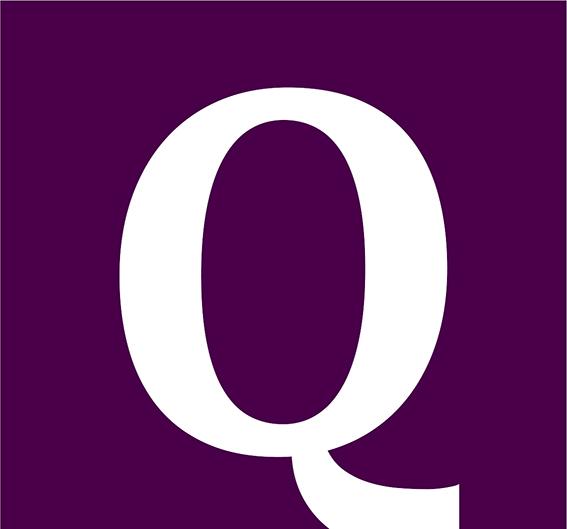Opera terminology can be confusing – often sounding as foreign to the uninitiated as the Italian many productions are sung in. Read on to get to know better some of the most widely used terms.

Acoustics
The qualities of sound within an enclosed space – those aspects of a room that, together, determine its character with respect to auditory effects, that is what you hear.
Act
A segment of the story made up of scenes and used by the composer to divide the work. It has a complete dramatic structure of its own.
Aria
Derived from the Greek and Latin aer (air), this is an extended vocal melody performed by one singer. It allows the character to express emotion or comment on the unfolding action, similar to a soliloquy in a play. An aria freezes the action; called a ‘static’ moment. One of opera’s most famous arias is ‘Nessun Dorma’ from Puccini’s Turandot (1926).

Baroque
A period of European musical history spanning from 1600 (Monteverdi) to 1750 (the death of Mozart). Such operas are characterised by their fantastical plots and ornate vocal detail. Major composers include Vivaldi, Bach and Handel.
Baton
The short stick the composer uses to direct the orchestra, keeping the musicians in time.
Bel canto
This Italian term literally translates as ‘beautiful singing’; it is lyrical style that emphasises beautiful tone, masterful vocal technique and elegant phrasing. It requires great vocal virtuosity and flawless technique from its interpreters. Well-known bel canto composers include Rossini, Bellini and Donizetti.

Cadenza
A musical passage, often near the end of an aria and unaccompanied, designed to show off the voice; singers perform a few improvised measures of vocally showy music.
Chorus
A group of singers, often with mixed voices, or the musical passage sung by such a group. The chorus sets the scene, while providing support to the principal singers.
Coloratura
Elaborately ornamented vocal music that requires the performer to execute a series of technically brilliant and difficult passages. These might include scales, trills or other devices that embellish the vocal.
Conductor
The person who directs the orchestra and singers, keeping everyone in time. Also known as the maestro (master). The conductor leads all the musicians in the performance of the opera.

Director
The person responsible for staging the production; in charge of everything that happens on stage. They interpret the dramatic elements and create the overall concept. The director works very closely with the conductor.
Diva
Literally meaning ‘goddess’, it refers to an important female opera star, sometimes called prima donna (first lady). Traditionally used to refer to a woman of outstanding talent in the opera world, It has somewhat unfairly come to mean a difficult or demanding woman – the male equivalent, divo, doesn’t have the same negative connotations.
Dress rehearsal
A final rehearsal that brings together all the elements of the production. The idea is to make it as much like the final performance as possible, so full set, costumes, orchestra and so on are used.
Dynamics
The musical term for volume – how loud or soft a piece of music should be played or sung.

Encore
A repeated performance at the end of the show, as called for by the audience; it simply means ‘again’ in French.
Ensemble
French for ‘together’, it refers to a piece sung by more than one person or the group of singers performing together. Often the performers sing different musical lines. Duets, trios, quartets and choruses are all ensembles.

Finale
The last section of an act or the entire piece. It brings the action to a close and is sung by an ensemble of the main characters or the entire cast brought back onto the stage. It is often extended and very dramatic.
Fioritura
Meaning ‘flowery’, this refers to the embellished vocal line found in many arias. All coloratura voices must be able to sing fioritura.
Forte
Literally ‘strong’, this means a piece is to be performed loudly.

Grand opera
An opera that is entirely sung with no spoken dialogue. The subject matter is serious and dramatic and the production epic, with large casts and orchestras and lavish and spectacular sets, costumes and effects.

Harmony
The combination of different notes, pitches or chords played at the same time.
Helden
A prefix meaning ‘heroic’, applied to different types of voices but most commonly tenor.
House manager
The person responsible for the audience and their entire experience from entry to the theatre and the box office to the seating area.

Interlude
A short musical composition between scenes or acts which serves to cover the change in scene and to move dramatically from one mood or atmosphere to another, advancing the story. Also intermezzo.
Interval
Or intermission. The break period between acts – a chance to stretch your legs and get an ice cream or glass of wine!

Nothing to see here.

Kammersanger
Literally meaning ‘chamber singer’, this German honorific title was bestowed on distinguished opera singers, often by princes or kings.

Legatto
A smooth, connected style of singing and playing, with no intervening break between individual notes. Italian for ‘tied together’.
Leitmotif
A short musical passage associated with a particular character, idea, mood, event or place. It represents the theme in question – think of the repeated music in horror films used to denote that danger is on its way.
Libretto
‘Little book’ in Italian, this contains all the sung words and stage directions for an opera. It is written by the librettist.

Marking
To sing softly, not at full voice. Performers may do this in rehearsal to save their voices for the full performance, helping to prevent strain.
Messa di voce
A musical technique in which a note is sung at a very quiet volume, gradually and smoothly made louder until it reaches a high volume (known as crescendo, then similarly made quiet again (decrescendo). Italian for ‘placing the voice’.
Mezza voce
Meaning ‘half voice’, this is intentionally singing in a quiet, soft style, usually to heighten emotion.

Nothing to see here.

Obligato
A solo instrumental piece within a vocal number designed to support or throw into relief the sung passage. Can be as musically showy as the vocal.
Operetta
‘Little opera’, a genre of light opera, both in terms of subject matter and music. These are usually shorter than operas and contain more spoken dialogue. Gilbert and Sullivan’s Pirates of Penzance (1880) is a well-known example.
Overture
A musical introduction to the performance. It contains elements of the opera, setting the scene for what’s to come.

Patter
A rapid flurry of singing, with lots of words crammed into the musical line in a short time period.
Pit
The part of the theatre in which the orchestra plays; typically a sunken area in front of the stage.
Portamento
An Italian term for sliding from one pitch (how high or low the notes are sung or played) to another continuously rather than jumping between the two.
Prelude
A short, introductory piece of music that leads into an act.
Producer
The person responsible for the financial and managerial aspects of putting on an opera. Works closely with the director to bring their vision to life.

Nothing to see here.

Range
The zone, from highest note to lowest, within which a voice sings or an instrument can be played.
Recitative
A type of music in which the singer adopts the rhythms of normal speech, it often serves to advance the plot and recount events – think spoken word poetry or even hip hop. Usually only lightly accompanied by the orchestra.
Repertoire
The stock pieces that a singer or company has ready to perform; often used to refer to the current season.
Roulade
Also known as a ‘run’, this is a succession of notes sung to one syllable.

Score
The written musical notation for a piece. Singers perform from memory, while musicians only have the score for their own parts; only the conductor has the full orchestral score, which has all the parts played by each instrument as well as the sung parts.
Serenade
A composition in a person’s honour. It is derived from the Italian word serano, meaning ‘calm’, and so it is typically a calm, light piece of music.
Set
The background and furnishings on stage to suggest the time period and place within which the opera is placed. Created by a set designer.
Sotto voce
Literally ‘under voice’, it requires the performer to sing or play with less intensity.
Staccato
A series of short, clipped and fast notes; the opposite of legato.
Surtitles
A translation – often in English – of what is being sung projected onto a screen above the stage. Also known as supertitles.

Tempo
From the Latin tempus, meaning ‘time’, this is the speed at which music is played. It is directed by the conductor.
Tessitura
Italian for ‘weaving’ or ‘texture’, this is the average range of a given role or voice; the range within which a singer can comfortably perform without straining.
Trouser role
A male part, usually a young man or boy, sung by a woman. Also known as a pants role.

Upstage
Position on stage, towards the rear of the stage, furthest from the audience. It is contrasted with downstage, which means at the front, closest to the audience. On a raked stage in which the stage slopes up towards the back, performers at the back literally were higher up, with those at the front lower down.
Unison
Singing or playing at the same time.

Vibrato
A gentle vibration created by rapid, slight variations of pitch in voice or instrument, adding warmth, tone and expressiveness.
Vocal score
This differs from the musical score in that the vocal parts are written in full, but without the full musical notation. Instrumental accompaniment is reduced to piano.

Nothing to see here.

Nothing to see here.

Nothing to see here.
We’ll be returning to many of these terms – and much more – in the coming months. Have we missed anything out? Let us know in the comments below.

